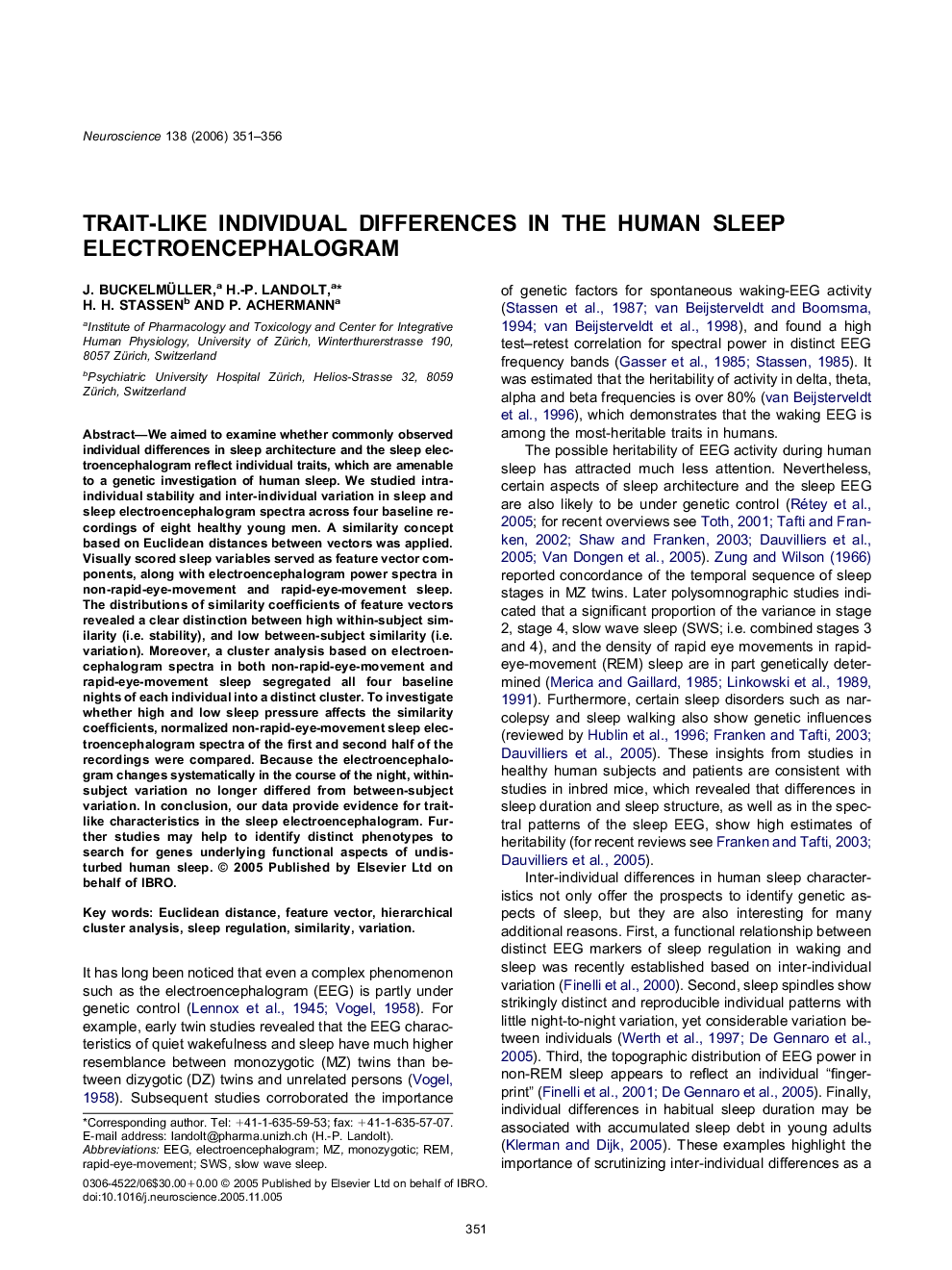| کد مقاله | کد نشریه | سال انتشار | مقاله انگلیسی | نسخه تمام متن |
|---|---|---|---|---|
| 4342035 | 1295853 | 2006 | 6 صفحه PDF | دانلود رایگان |

We aimed to examine whether commonly observed individual differences in sleep architecture and the sleep electroencephalogram reflect individual traits, which are amenable to a genetic investigation of human sleep. We studied intra-individual stability and inter-individual variation in sleep and sleep electroencephalogram spectra across four baseline recordings of eight healthy young men. A similarity concept based on Euclidean distances between vectors was applied. Visually scored sleep variables served as feature vector components, along with electroencephalogram power spectra in non-rapid-eye-movement and rapid-eye-movement sleep. The distributions of similarity coefficients of feature vectors revealed a clear distinction between high within-subject similarity (i.e. stability), and low between-subject similarity (i.e. variation). Moreover, a cluster analysis based on electroencephalogram spectra in both non-rapid-eye-movement and rapid-eye-movement sleep segregated all four baseline nights of each individual into a distinct cluster. To investigate whether high and low sleep pressure affects the similarity coefficients, normalized non-rapid-eye-movement sleep electroencephalogram spectra of the first and second half of the recordings were compared. Because the electroencephalogram changes systematically in the course of the night, within-subject variation no longer differed from between-subject variation. In conclusion, our data provide evidence for trait-like characteristics in the sleep electroencephalogram. Further studies may help to identify distinct phenotypes to search for genes underlying functional aspects of undisturbed human sleep.
Journal: Neuroscience - Volume 138, Issue 1, 2006, Pages 351–356